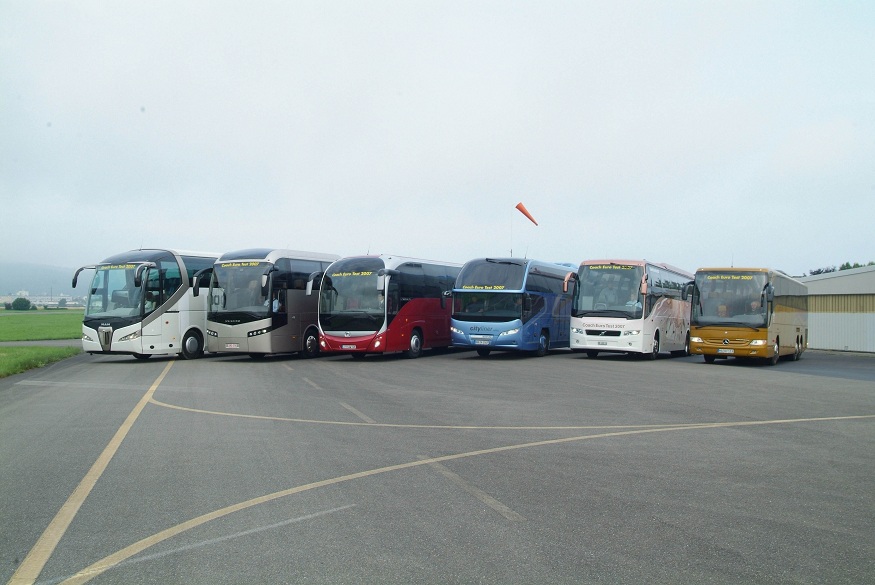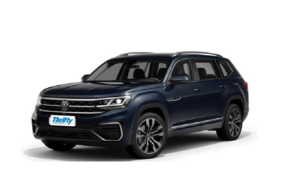Different between a bus and coach travelling
Bus”, “car”, “autobus” or “autocar”? But what is the difference between a bus and a coach? Don’t tell a bus driver that he is actually a coach driver and vice versa… You risk offending them, and not getting into his vehicle for your next trip!
So we decided to shed some light on the subject for you! This is especially important to know if you are considering renting a coach to go on a trip with a group.
Traveling by coach or bus, two ways to get around
When it comes to passenger road transport , the terms ‘bus’ and ‘coach’ are often used interchangeably. However, they are actually very different vehicles with different functions. You won’t take the same journeys with a bus or a coach and you won’t have the same adventures, that’s for sure!
The answer to two different needs
Buses are mainly used for urban and suburban transport . They make short trips with many frequent stops to pick up and drop off passengers. Buses are designed to carry large numbers of passengers over short distances, often in a standing position. They do not have a place to drop off luggage and do not encourage you to settle in comfortably for your journey. For example, to get from home to the village school, or from home to the city centre, you would take a bus.
City bus
The coach is intended for intercity or long-distance journeys. It is then the abbreviation of the word “coach”. This large passenger transport vehicle offers superior comfort and many additional services. It has reclining seats, tables, nets for storing your belongings, toilets , etc. It can also include little extras that make all the difference during a long journey: televisions, Wi-Fi and sometimes even individual screens.
Coaches make fewer stops and are designed for passenger comfort, over long periods of time. They can be used for intercity transport or long-distance journeys such as tourist trips. For example, if your Lyon sports club has to go to Bordeaux for a competition, a coach will take you there!
Car or bus: technical characteristics specific to each
Buses often have a higher capacity in terms of the number of passengers , including standing passengers. On the contrary, coaches offer more individual seats and more generous legroom. They are simply not designed for the same journeys, nor for the same types of travellers. For example, you can find buses with several hundred seats , designed to make short journeys, something that a coach will never be able to do.
Coaches have fewer seats and focus on passenger comfort . You will find additional amenities such as air conditioning, luggage racks and sometimes electrical outlets. These technical features will never be found on a bus, which is basically just a transit vehicle. Do you want maximum comfort? Opt for renting a minibus with driver : the ultimate in freedom-filled holidays!
This is a coach
Coaches and buses are not exactly subject to the same rules . Indeed, French (and European) legislation does not allow them the same things. For example, buses mainly use urban roads and often benefit from reserved lanes in cities. In the same city, buses will be able to use reserved access lanes, while coaches will have to stay on traditional roads, alongside cars and two-wheelers.
Coaches are more regularly using motorways and intercity roads, requiring suitable infrastructure for extended stops. Roads reserved for all public transport vehicles are increasingly popular in cities, particularly on the outskirts of cities. The Ministry of Ecological Transition and Territorial Cohesion encourages their use in order to limit greenhouse gas emissions (pollution). City buses are not able to travel at the same speed as coaches. They are heavier and less malleable.
Driving time? What does the law say?
Finally, buses are subject to strict standards in terms of frequency of stops and urban safety. They must pick up passengers regularly and make useful journeys. Drivers can drive all day, according to the 35-hour week of the French labor code. Coach drivers, on the other hand, must respect strict safety standards over long distances, regulating both their driving time and their rest time.
In summary, although buses and coaches may seem similar, they meet very different transport needs. The bus is ideal for short and frequent trips within the city, while the coach is designed for comfort and efficiency over long distances. Choosing the right vehicle therefore depends on the nature of the journey and the specific needs of the passengers.
A little subtlety : the vehicles that carry out tourist tours, for example in large cities, are indeed called “buses”!











Post Comment
You must be logged in to post a comment.